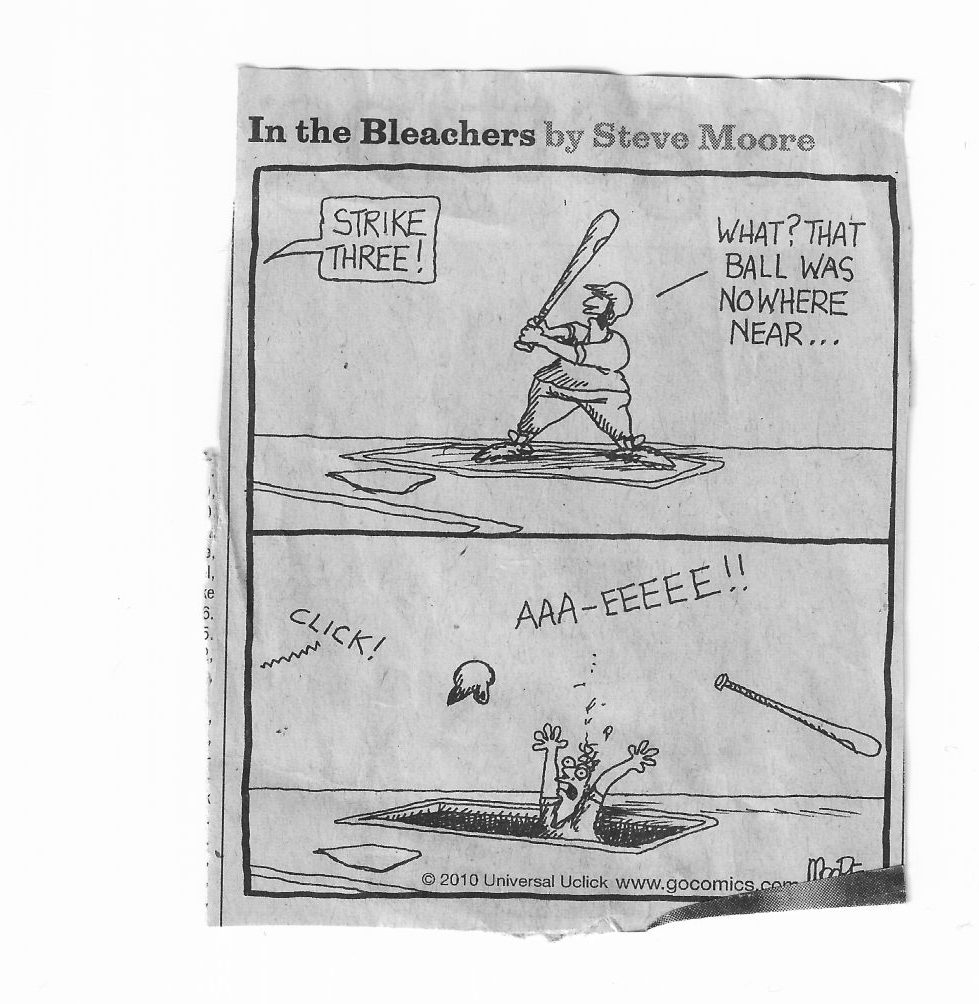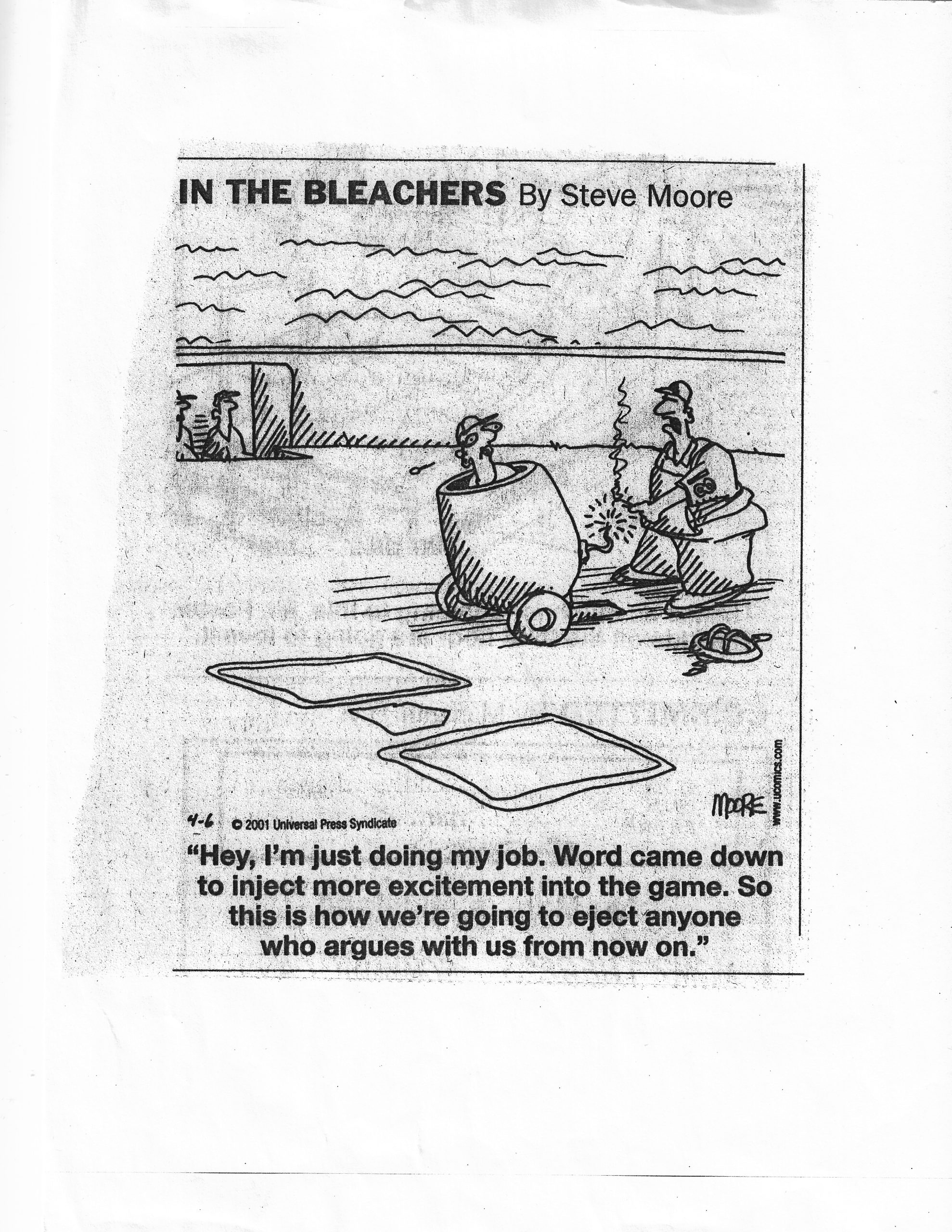The first step to handling ejections is to try to avoid them if at all possible. One of the most important tenets for college softball umpires is respect for coaches and the jobs they have. We must do all we can to use the ejection tool only as a last resort. Review the Warnings article in the Game Management/Preventive section and the Judgment Calls and Arguments in this Game Management/Preventive section.
Start with the EWE approach – Enough, Warning, Ejection. Try to settle the difference of opinion by initially using the “that’s Enough, coach” informal warning. If the coach continues to make comments, argue, or in any way indicates an escalation of the situation, a formal Warning must be used. Be very clear in stating this to ensure the coach knows he/she has been given a formal warning, using the rule book language (13.8.4) – “Coach, this is your warning for continuing to argue a call based purely on umpire judgment.” (13.8.4),
Uniformity for reasons and actions that cause ejection
We all have a different tolerance level when dealing with misconduct. There is also an excellent article by Anthony Garcia is the Arguments section – Handling Situations. You should also read the article Comments and Gestures – Where Is Your Line in the Preventive section of the Game Management Corner. It has a concise list for establishing what you might consider your “noise vs. unprofessional conduct” policy. Here are some actions which should be on everybody’s over-the-line list:
• Use of profanity directed at umpire or vulgar personal insults
• Accusations of bias or cheating
• Deliberate physical contact
• Refusal to stop arguing
• Use of gestures while arguing
• Stepping out of dugout and yelling or gesturing toward an umpire
• Throwing anything from the dugout or while arguing
DISCUSSION POINT: Each person discusses which of the above are on their list and add any others.
Tolerance levels
Different team personnel, as well as spectators, may decide to be umpires once in a while and make comments or argue with umpires.
Spectators
You must have complete tolerance with spectators. Ignore them completely at all times. Use the on-site administrator to handle the situation if any spectator uses profanity or makes personal threats. If you spend any of your time on the field listening to fans or giving significant credibility to what fans say, you are bound to hurt your game. Keep in mind, few fans know much about the rules of mechanics. Let their comments fall to the ground with no reaction.
Head coach
The head coach should be given the most tolerance. They are the group to whom we must give our greatest attention. Vulgarity and personal attacks require instant response. But if a head coach is asking a legitimate question in a calm, respectful manner, always listen to what they have to say and show them respect when communicating with them.
Base, Assistant coach and Pitching coaches
These coaches have slightly less tolerance than the head coach. You should usually listen to them unless their comments become too vocal too often. You should also discourage base coaches from verbalizing or signaling safe calls. Most “discussions” with these coaches can be handled with an informal warning; if not you can engage the head coach, perhaps between innings if it is not too serious, and ask him/her to help you with that coach. Keep in mind the new rule added to the 2024-2025 rule book: Assistant coaches may not leave their position in the dugout or bullpen area to appeal, question, or argue on the field. EFFECT—The violator shall be immediately ejected.
Players
If players engage in unsporting behavior, either with opponents for an umpire, they should be given very little tolerance. Try not to communicate with them directly, unless it is a quick “OK, that’s enough” after an unsporting act. Get the head coach involved or issue a warning if it is serious. The key to communication with players is what they say and how they say it.

Bench personnel, trainers, support personnel
This group gets nearly zero tolerance. Do not allow the bench to yell comments or engage in unsporting acts.
Duties of umpires
The entire crew must act as a united front when thing get to an ejection point. Be alert when a partner is involved in an argument. If your sense trouble, move in closer but let the involved umpire handle it. If you are the ejecting umpire make sure all umpires know of the ejection.
Post ejection on the field
As soon as the ejecting umpire has made it clear that an ejection has transpired, he/she is finished with the situation – distance yourself from the coach but do not turn your back; pull out your lineup card and write the details – coach’s name, team name, score, inning, outs, runners, count on batter, and reason. Nothing good can happen if the ejecting umpire continues to engage the coach. Do not resume play until the ejected person is completely gone. Use the time to tell scorebook to record all the details
Another umpire must now step in and clean it up. Get physically between the umpire and the ejected person but avoid any contact. Talk calmly and almost continually, telling the person they must leave the field immediately. There should be no pretense of listening to him/her except to say innocent comments such as, “yes, coach, I understand, but you need to leave”, or “Come on, let’s go ”or “I know, I know, but you gotta get out of here.” You can also use these techniques:
• Be guiding (not touching) the person toward their dugout
• Get assistant coach to help; “Hey coach, would you help us here”, or “You know he/she has to go or it could hurt the game” or “For the sake of your players, help us get him out of here” or “We can’t play until he is out of here”
DISCUSSION POINT: Each person discusses the details of one of their ejections – what was done right and wrong. If no ejections, ask that person if they were ever very close to ejecting somebody.
Know where the ejected person is to go. The only one who can stay is a player, who must remain in the dugout and not communicate with opponents or umpires. Nonplaying personnel must leave the dugout and other team areas and stay out of sight and sound until the umpires’ jurisdiction ends. Make it clear to them – if they do not it will result in a forfeit.

Post-game reflection
Any ejection requires a thorough post-game discussion by the crew. See the article in the Protocols Corner/Responsibilities – The Protocols for Ejections and Protests.
